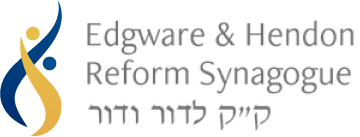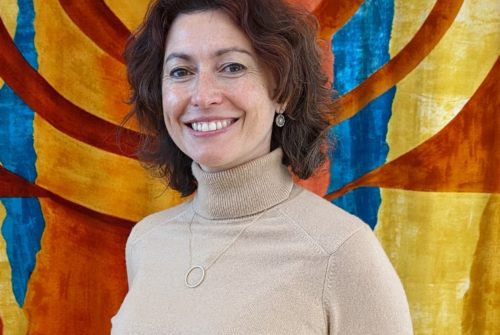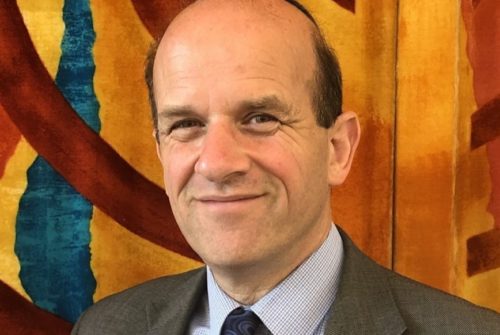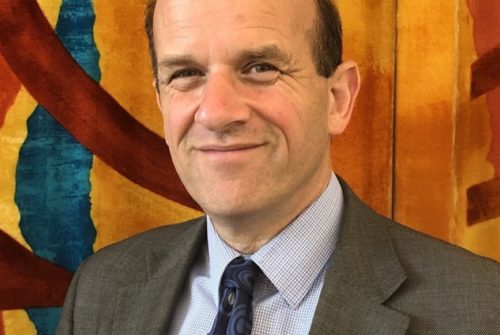Last Shabbat I was invited to speak at Oxford Jsoc for International Women’s Day. I did explain that I am also able to speak the other 364 days of the year (365 this year). We had a wonderful Shabbat there, staying over in the Jewish community centre where there is an Orthodox synagogue, a second sanctuary where Liberal, Masorti and Egalitarian services happen, and a space for all to come together over Kiddush. But what struck me as particularly strange, were the number of students who came over to tell me they had never met a woman rabbi before. Growing up in a Reform community that only employed women rabbis from 1985 to 2004, I always joke that I didn’t know men could be rabbis when I was growing up. So it still surprises me that to some people we remain exotic and interesting.
This week the Anglican Church marked 30 years of women’s ordination. Next year we will mark 50 years since our first, Rabbi Jackie Tabick was ordained. But of course it wasn’t always thus… change takes time and a desire to move. When the West London Synagogue of British Jews built its current building in 1870, as the first UK Reform synagogue, they included a women’s gallery. And if you visit today you can still see the words of Proverbs – Eishet Chayil – A woman of Valour, emblazoned above the doors into the gallery (no longer a women’s gallery of course). Women were initially invited to sit among the downstairs congregation during the Second World War, when there were concerns that if a bomb were to fall, everyone would need to evacuate and they didn’t want to over complicate things with people trying to find family members. After the war they were sent back upstairs. Over time the division slowly vanished, until the 1960’s when it was only enforced on High Holidays, and then even that was done away with, as society shifted away from the gender role divisions that continue to haunt us but are slowly dissolving.
While Rabbis Mark and Tanya and Cantor Tamara are off at the Reform movement biennial Reform movement conference, known as ‘Chagigah’ this Shabbat, I am reminded of how important Reform Judaism has been to me throughout my life and to making my Judaism a meaningful part of it. But things have changed since I was a child, which was only a few years ago right? This is not the siddur I grew up with, this September we will not be using the Machzor I grew up with (for which I actually feel a degree of relief!) and while my husband was Bar Mitzvah at EDRS, this is not the sanctuary in which it happened! Change must come, and it is integral to the Jewish story.
With huge thanks to the two Lawrence’s and Frankie, we heard read in this week’s portion the completion of the Mishkan – the flat pack desert temple that our portions have been unpacking almost as painstakingly as the instructions for an Ikea bookcase over the last few weeks. This was the focus of the spiritual and religious lives of the Israelites. And when they entered the land, it became the Temple in Jerusalem. And the second Temple was not identical to the first, particularly when Herod took the helm and made it the fanciest place to be in town. But when that was destroyed in 70AD, it became the task of Rabbinic Judaism to figure out how livingly Jewishly would look without this focal point on which so many of our festivals and practices focused on.
For the last 2000 years this has been Judaism’s task. How do we mark Passover without a Paschal Sacrafice? We developed the Haggadah and the seder meal, and continue to add to and enhance the seder year on year to speak about Freedom today. How do we celebrate Shavuot, the festival of bringing offerings of first fruits to the Temple? It becomes the moment to celebrate the giving of Torah, not something connected to Shavuot in Torah itself. Each generation has responded to the challenges of their day, with the ancient words of the Kaddish becoming a mourners prayer for orphans during the time of the Crusades, and later a more general mourners prayer. You get the idea… Judaism has never stood still or been a singular, easy to summarise monolith.
Working with different Christian communities, every now and then I am described as coming from ‘Reformed Judaism’ – I assume because of the Reformed Church. I always correct the mistake by explaining we aren’t Reformed because that implies we are finished changing. We are Reform because we are, true to thousands of years of Jewish practice, always evolving and responding to the world around us.
In many ways that is the joy of being part of a movement. We walk the journey of growth and change together, understanding that to act as a community or as a movement has greater impact than to act alone. We can learn from one another, support one another, we are better together. This weekend might be the last of the Reform Judaism Chagigah conferences, as by the end of this year the plan is to birth a new, unified movement of Progressive Judaism, through which we can move with even greater strength, greater public presence, and, let’s be pragmatic, less wasted on two back offices. We have members here who have easily moved between movements, indeed I’m the only one of our clergy who has never served in a Liberal congregation. Our tradition of change, growth, and response to the world around us will continue with integrity and meaning, and for me personally, being part of a movement that really examines the change and steps forward into it knowingly and meaningfully is crucial.
As we read about the completion of the Mishkan, we take a moment this week to remember the ever turning cycles of change that have brought us from there to here. On finishing the book of Exodus we said ‘Chazak Chazak v’nitchazek’ – Strength, Strength, may we be strengthened – may the turning of these ancient words always strengthen us, and help us move towards change, growth, and a continual cycle of ensuring Judaism is meaningful and engaging in every age.
Cain Yehi Ratzon, may this be God’s will, and let us say Amen.



